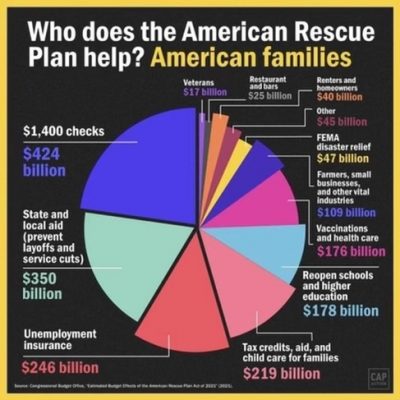Congress passed the $1.9 Trillion American Rescue Plan (ARPA) on Wednesday, March 11 along party lines, without a single Republican voting for the package. President Biden is expected to sign the legislation on Friday.
Ark Valley Voice covered the key elements of the bill earlier this week. An important element of the plan is the Child Tax Credit Proposal to support families, which is projected to accomplish cutting child poverty nearly in half.
Called a “Policy Revolution” with a “Seismic Impact” the inclusion of an expanded Child Tax Credit was proposed and championed by Senator Michael Bennet (D- Colorado), based on Bennet’s American Family Act. It will send much-needed relief to struggling families in Colorado and lift millions of kids out of poverty nationwide.
“It is as far away as you can get from regressive, supply-side economics,’ said Bennet, a longtime champion of an expanded child tax credit to fight poverty. “This is progressive economics that puts money in the hands of working people who will spend that money.”
“Obscured by other parts of President Biden’s $1.9 trillion stimulus package, which won Senate approval … the child benefit has the makings of a policy revolution,” crowed the New York Times. “Though framed in technocratic terms as an expansion of an existing tax credit, it is essentially a guaranteed income for families with children, akin to children’s allowances that are common in other rich countries.
The second provision is a more generous and fully refundable child tax credit. It almost doubles the size of the child tax credit, increasing the maximum credit to $3,600 per year for each kid under the age of six ($3,000 for children ages 6 to 17). For the first time ever, the poorest families with little or no income would receive the full benefit that has been denied them in the past. Finally, the 39 percent of children in families too poor to receive the full child tax credit will no longer get left behind.
Most families with children would benefit, but families of color will benefit more relative to their current income. Families in the bottom fifth of income, typically making less than $21,000 in a year and including many rural families, would see a boost in income by more than one-third for a period of one year. The plan sets up the benefits to be delivered monthly, helping put food on the table and pay rent at a time when jobs are scarce and food insecurity is on the rise. This plan directly combats child poverty, targeting to cut the rate in half.
The Huffington Post reported that “Several Republicans said they liked the idea of expanding the child tax credit. However, none supported the Democratic proposal, which is modeled on the American Family Act, a bill first introduced in 2018 by Sens. Michael Bennet (D-Colo.) and Sherrod Brown (D-Ohio). Every Republican has voted against the broader rescue package so far; Senate Minority Leader Mitch McConnell (R-Ky.) called the child tax provisions ‘a brand-new, sprawling cash welfare program.’ ”
Research from the JPMorgan Chase Institute shows that low earners spent those savings down faster in the summer than higher earners, which suggests that they could use more help in the recovery and would most likely put that money to work in the economy.
“This has long been a goal of Colorado’s U.S. Sen. Michael Bennet, who with other Democrats hopes to make the change permanent. ‘More than 10 million children are going to be lifted out of poverty,” added Bennet speaking on MSNBC.”








Recent Comments